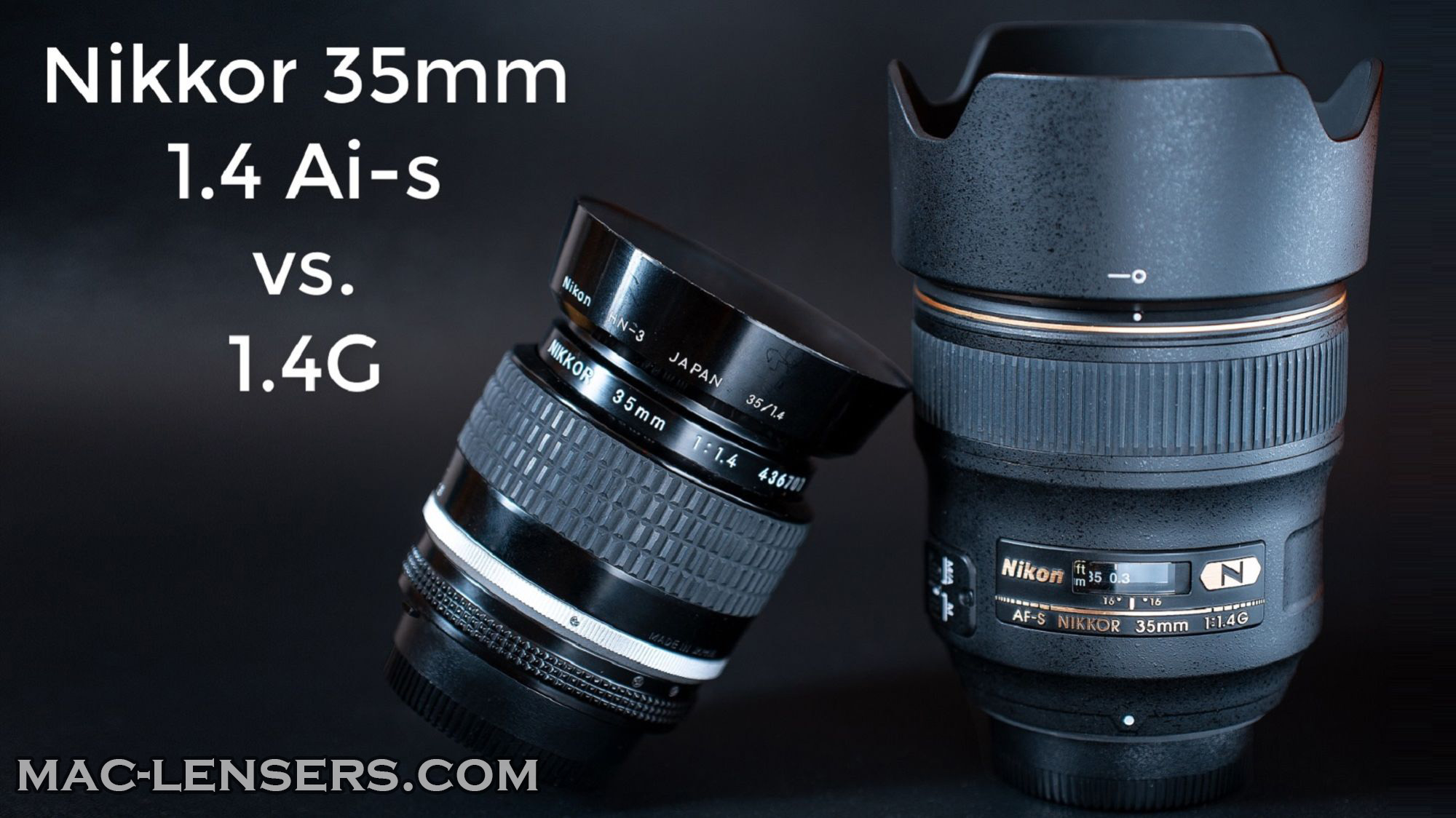Comparisons
Par Peluca
Hello friends,
Today we’re going to compare two excellent lenses. One has been around for 50 years and has been a favourite for now a few generations of photographers. The other is younger and it can be seen as a long sought update but I still prefer to see them as two different lenses of the same focal length. These lenses are the Nikkor 35mm f/1.4 Ais, the old guy, and the Nikkor 35mm f/1.4G as the new guy.
As I told you before, I prefer to see them as two different lenses and the purpose of this comparison is not to say, this lens is best, or this one is best. This is pointless; especially for photography where the lens is just a tool. The most powerful tools of a photographer are, and always will be, creativity and mastery of light, lenses and cameras are just means to convey them. However, knowing you lenses and cameras is key to maximize your creative output.
So, the goal of this comparison is to show you the differences between both lenses and the possibilities they offer. Before digging into technical details and deep comparisons, let us take a look of what these lenses are capable of in real-life photography.
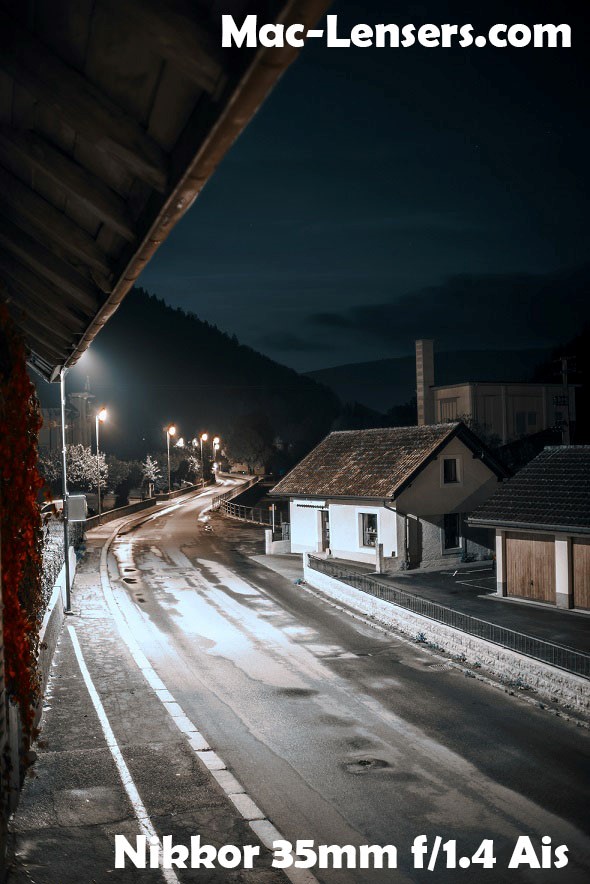
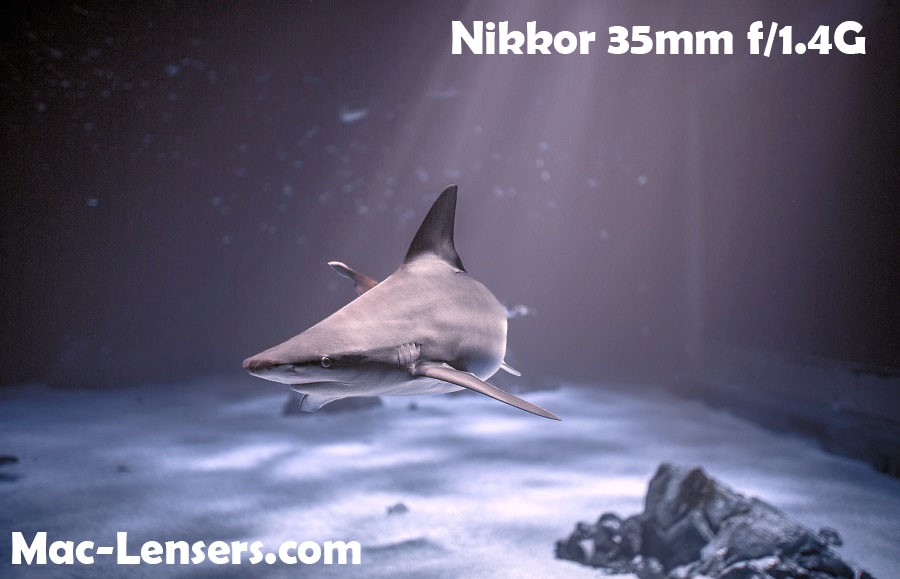
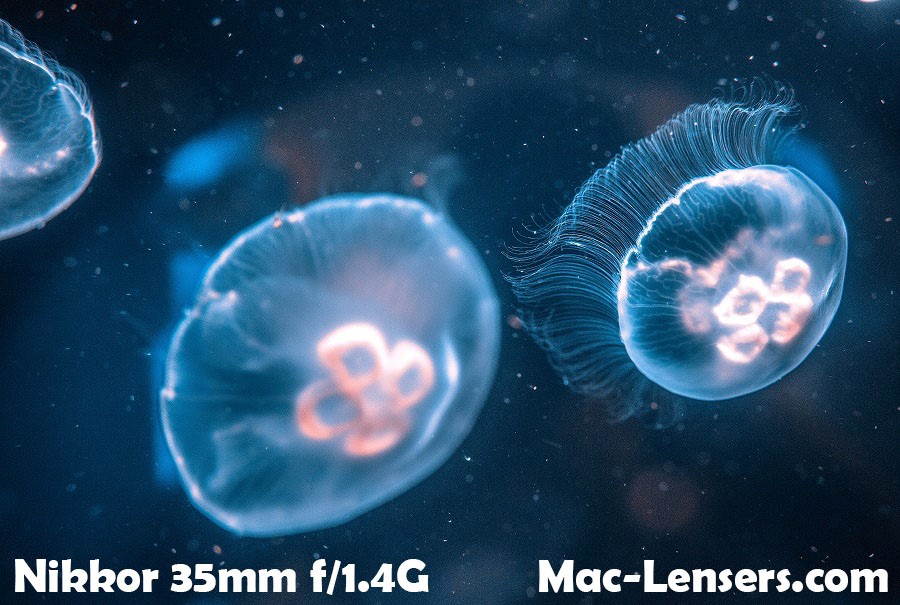
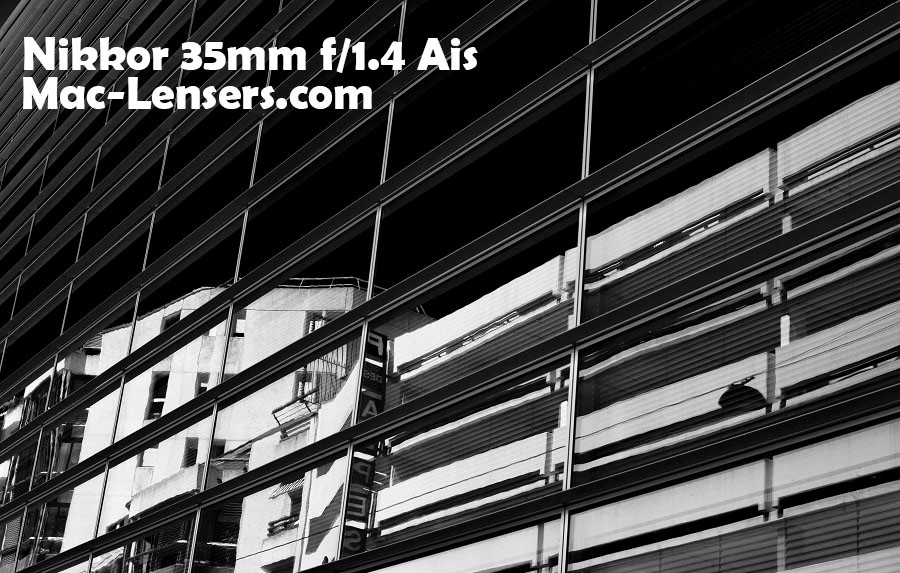
Ok, let us dig now into more technical details:
Optical prescription
We start with the Nikkor 35mm f/1.4 Ais. Its optical prescription was completed in 1959 and has been gradually improved since, as this lens can still be bought today new. Principal improvements are integration of modern coatings and update of elements curvature diameters to improve performance wide open. Besides that, original prescription of 9 elements in 7 groups has been maintained since (see below).
The Nikkor 35mm 1.4G came out in 2010. We can estimate that its optical prescription was completed somewhere around 2008, and consists of 10 elements in 7 groups. That is one element more than the 1.4 Ais, and if we check both prescriptions side to side (see below), we see that they are substantially different. Also, the 1.4G version has an aspherical element, which helps considerably to reduce aberrations and provide uniformity all over the frame (see more about aspherical lenses here).
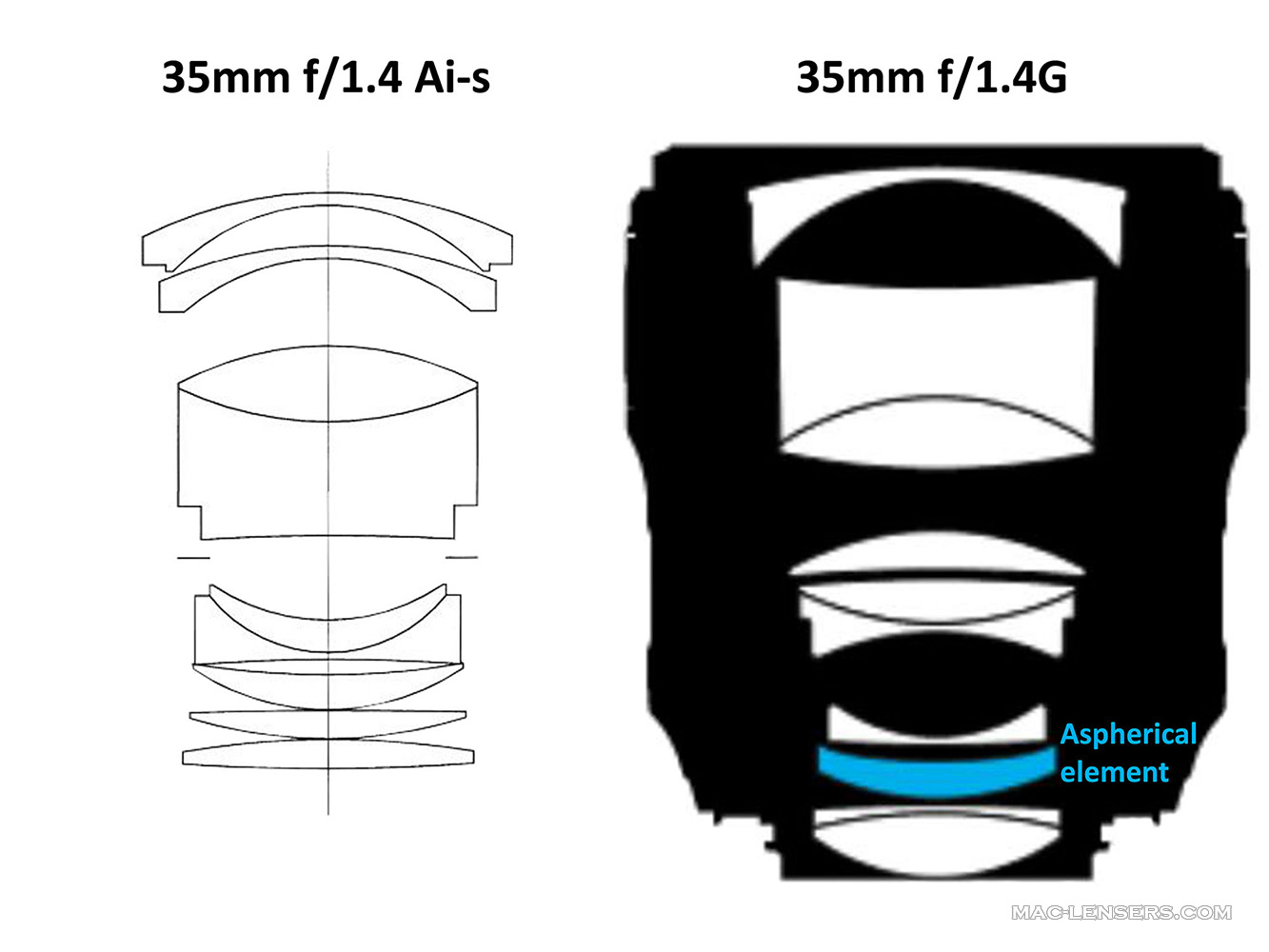
Construction
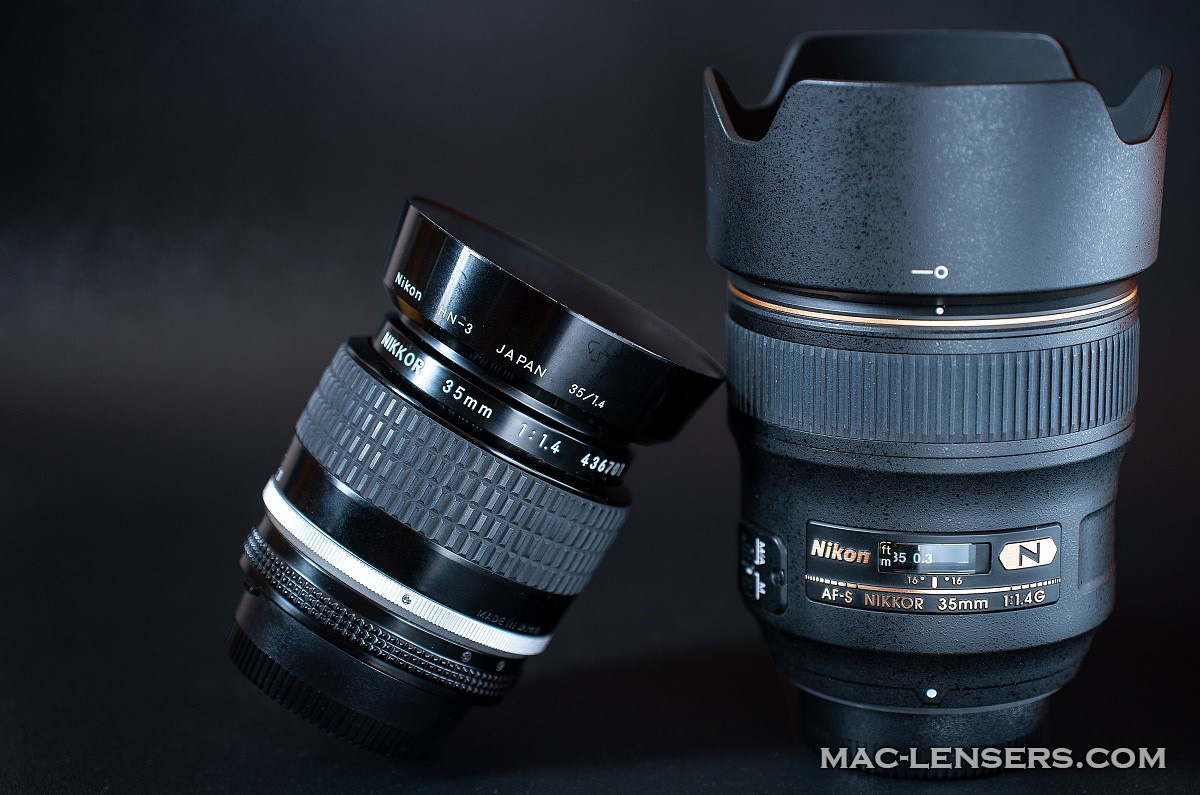
Construction-wise, both lenses look very different. The Ai-s version carries 2/3 the size and weight (400g) of the G version (600g). The Ai-s is a manual lens and like all pre-Ai, Ai, and Ai-s has a full metal construction and it is made to last a few lifetimes. Even the hood is metal and like most Nikkors from the 60’s and 70’s, the original hood is sometimes harder to find than the lens itself.
Depending on the version, the 35mm 1.4 manual version (i.e. K, Ai, Ai-s) can have 7 or 9 diaphragm blades. Ai-s versions have all 9 blades; previous versions have 7, and some rather rare pre-Ai versions with 9 blades. More blades produce smoother bokeh, especially at large apertures.
One last thing that it is very nice about the manual version (all of them!) is that it has a 52mm diameter filter thread, which allows using the more common filter size of 52mm. Also, smaller filters are always cheaper than larger ones.
The 1.4G version is larger and heavier (600g), which is expected since it is an autofocus lens. The material of the body is hard to tell whether if it is plastic or magnesium, a way to know for sure would be to scratch the lens with a pointy object, but I prefer being in doubt here. Hood and filter thread are both plastic. Filter thread is 67mm, which I personally find to be an odd size since it limits significantly the use of filters.
The 1.4G being an autofocus lens, although larger, it is very practical to take images where swiftness is primordial, like the aquarium pictures shown above.
Comparisons
For me, these two lenses are creatures of the night, therefore, nothing more logical to start our comparisons than Night photography.
Here you have the main street of a little town, both photos taken with same camera, same settings at 5 minutes apart. The first thing that can be seen at a first glance is that although both images look the same, the one taken with the 1.4G is slightly sharper.
But as the image after shows, zooming into the image shows that the Ais is not bad at all in sharpness. Indeed, to a rather sharp image, superposes a soft glow that is associated with the spherical aberration, and it is highly possible that modifying one of the surfaces of the Ais to be aspherical will lead to even better results. Other thing that can be noticed is how each lens renders the street lights, the 1.4G gives a very nice and controlled rendition, whereas, for the 1.4 Ais, they are blown away. This is for sure another effect of the spherical aberration, which in this case, I prefer as the contrast makes the image far more interesting.
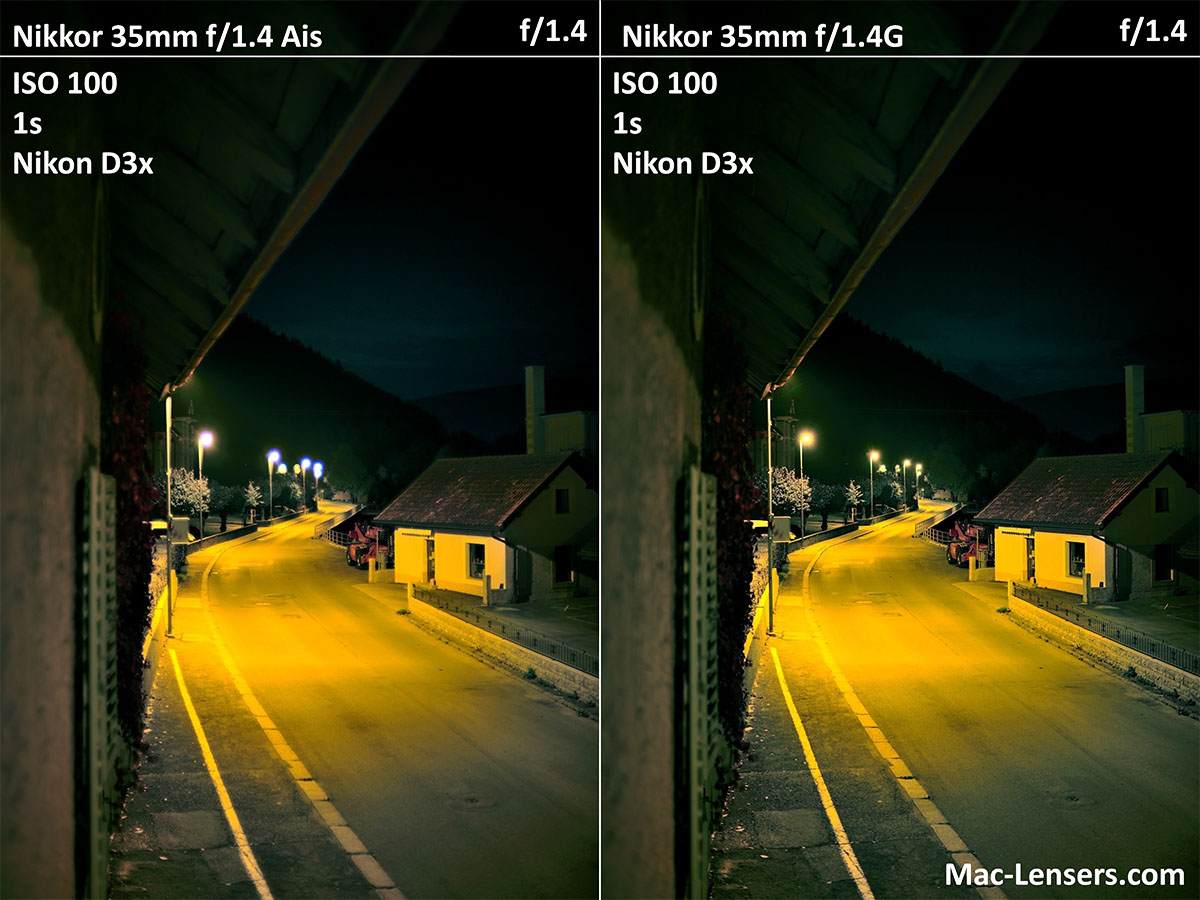
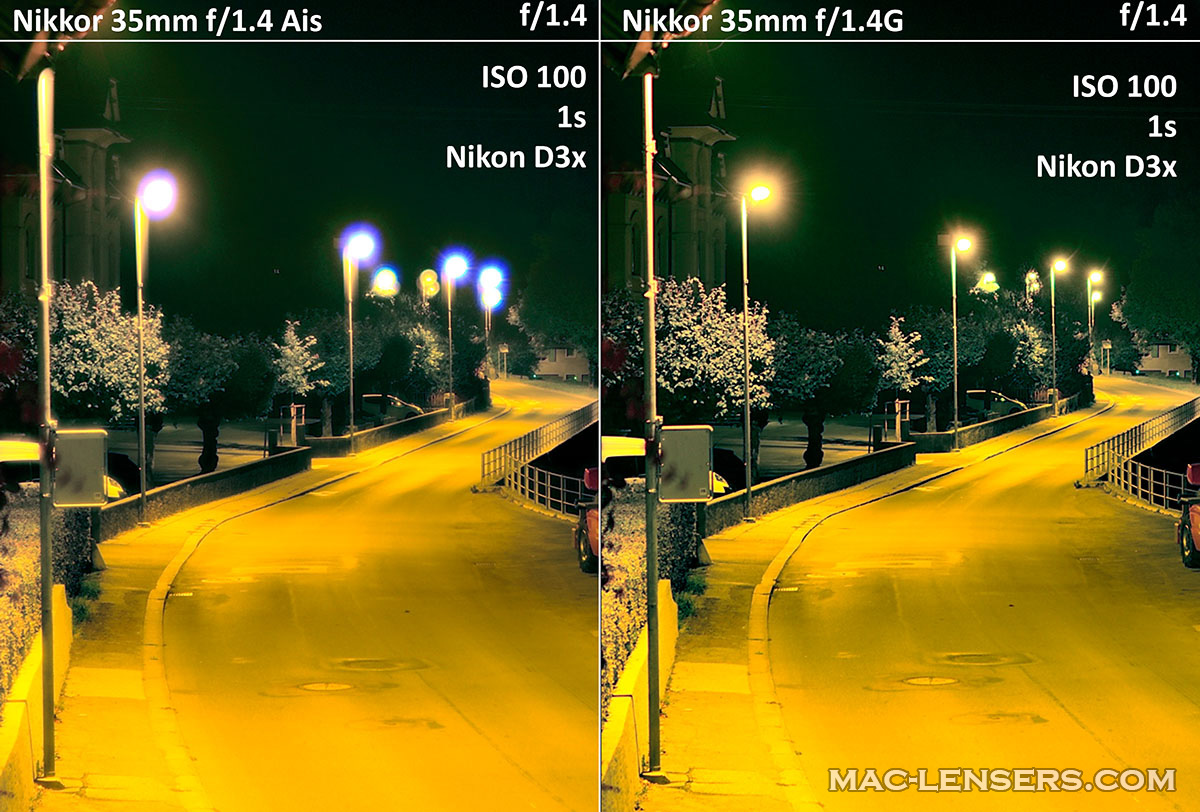
Then, if we close to f/2, the Ais catches up really quick with the 1.4G. We also see that the lights are now well controlled in both lenses and getting the point star pattern rather sought for in night photography. There is still a difference between both lenses toward the edge of the image, but only relevant if you’re really pixel peeping.
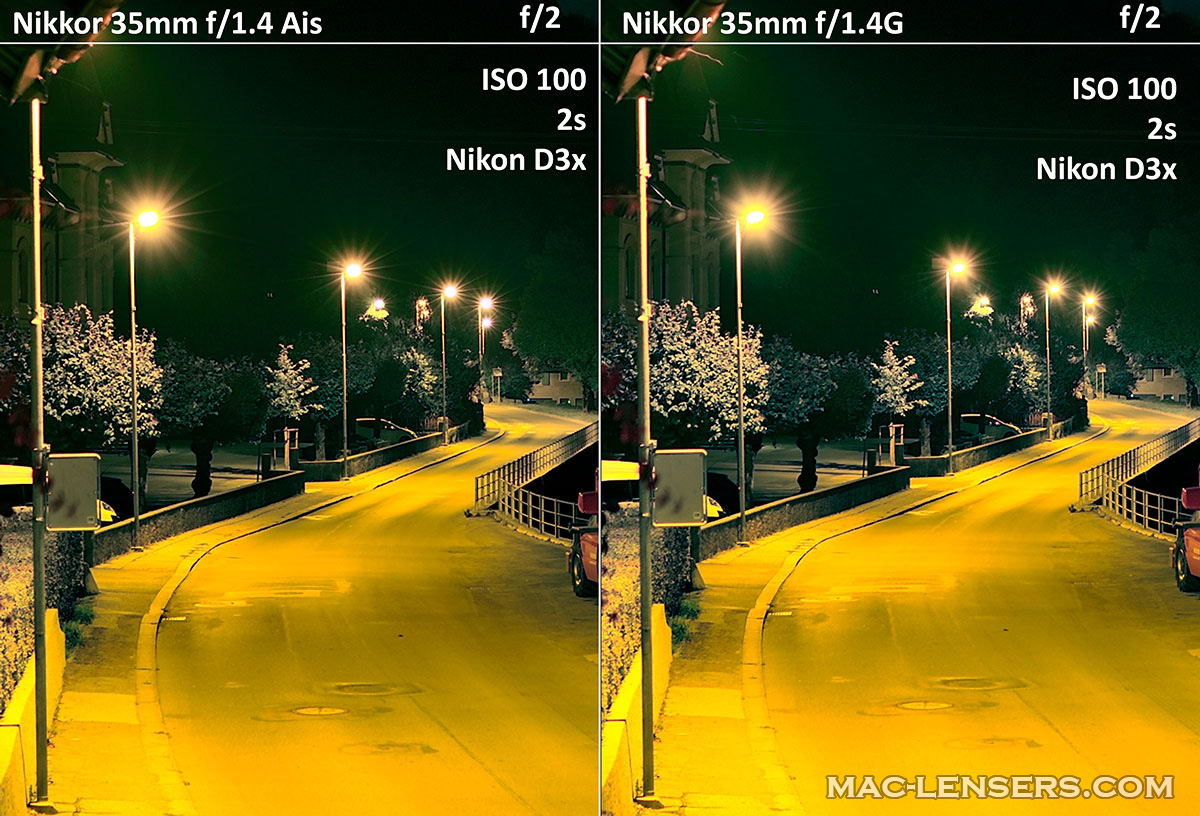
Then, if we go further into the apertures, let’s take f/5.6 for example, the results become almost indistinguishable from each other, the only giveaway being the point stars on the images, and even that is hard to tell. The point stars have nothing to do with the optics and much with the shape of the diaphragm, with the number of arms being 2 times the number of aperture blades, each star in both pictures has 18 arms, which indicates that both diaphragms should have 9 blades and that is the case.
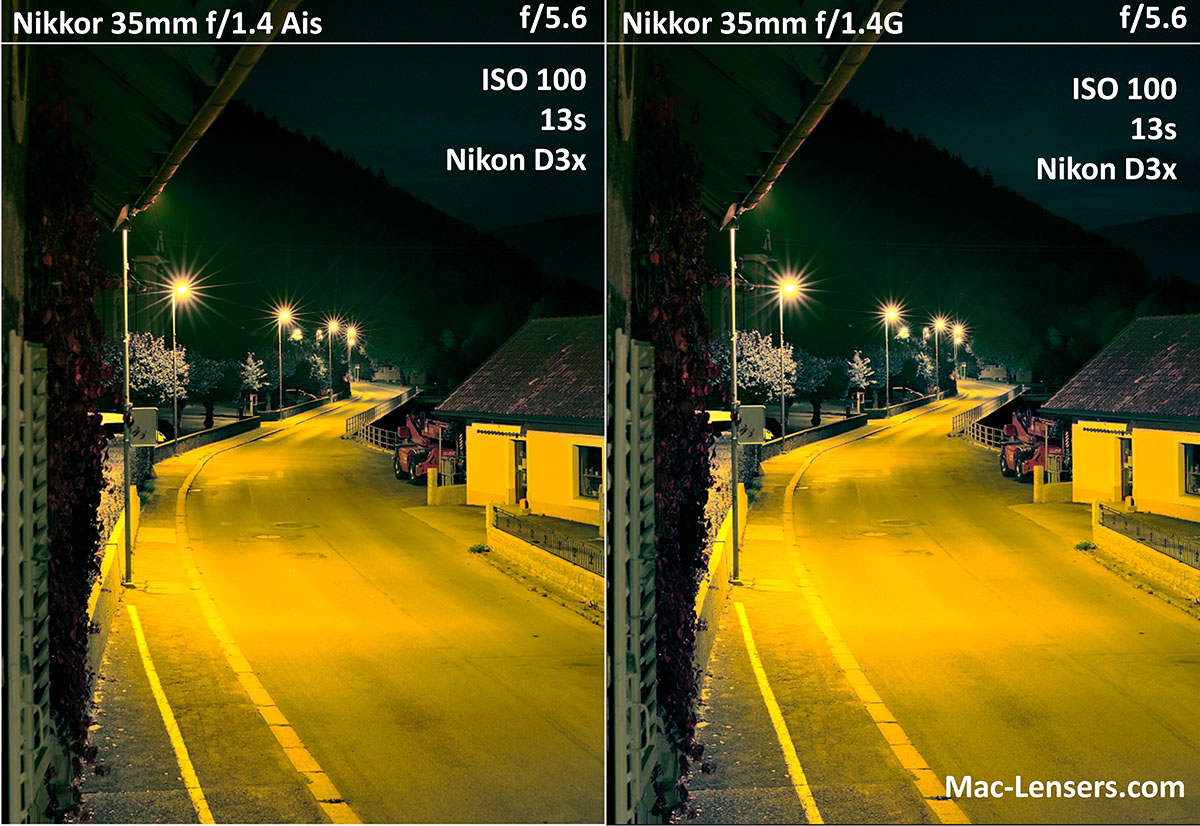
What we can say so far? From a distance, both lenses are very good. The 1.4G having and edge on sharpness wide-open, but it fades away quickly as lenses are closed-down.
Now, let’s take a look at how these lenses perform in close-up.
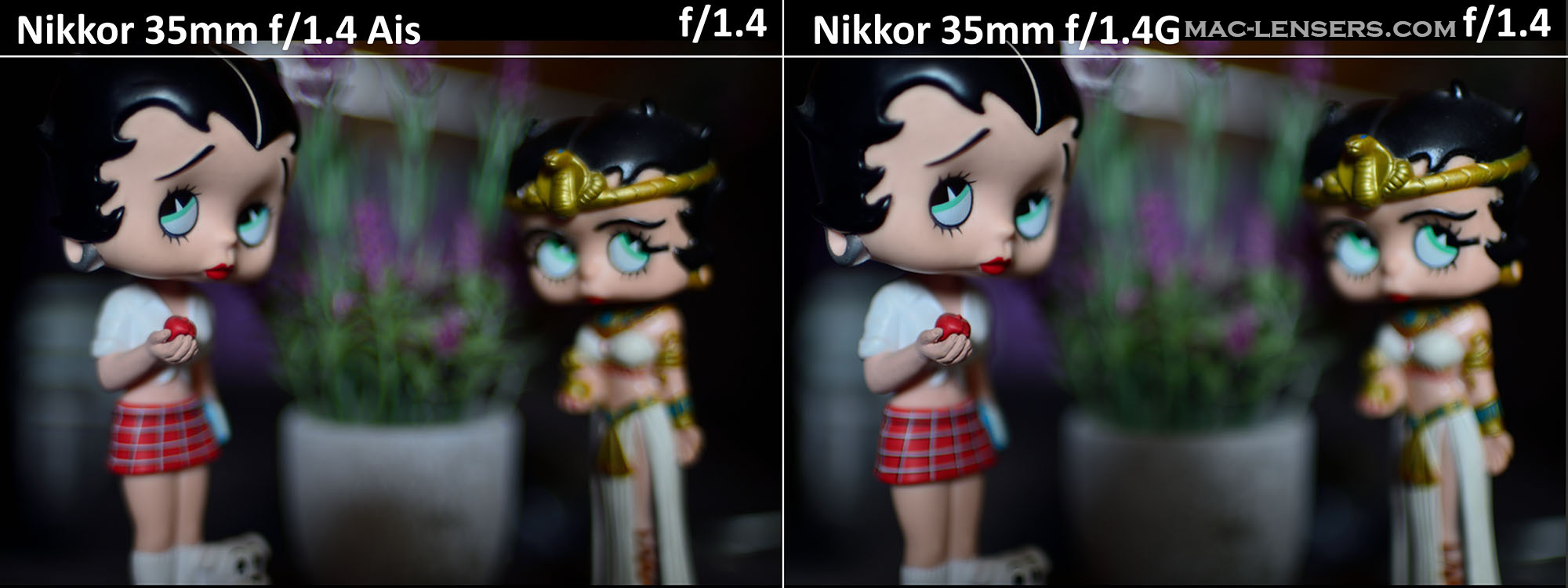
We took these images at the minimum focusing distance of both lenses, which is about 30 centimeters (or 1 foot). Here, we see already a big difference. At close distance, the 1.4 Ais seems to be slightly wider than its modern counterpart. Also, the Ais gives a feel of depth to the composition that the 1.4G completely lacks (everything seems to be compressed to the same plane). Sharpness-wise, wide open, the still 1.4G wins, as shown on the crop below. However, at least for the composition above, the 1.4 Ais gives a more harmonious image.
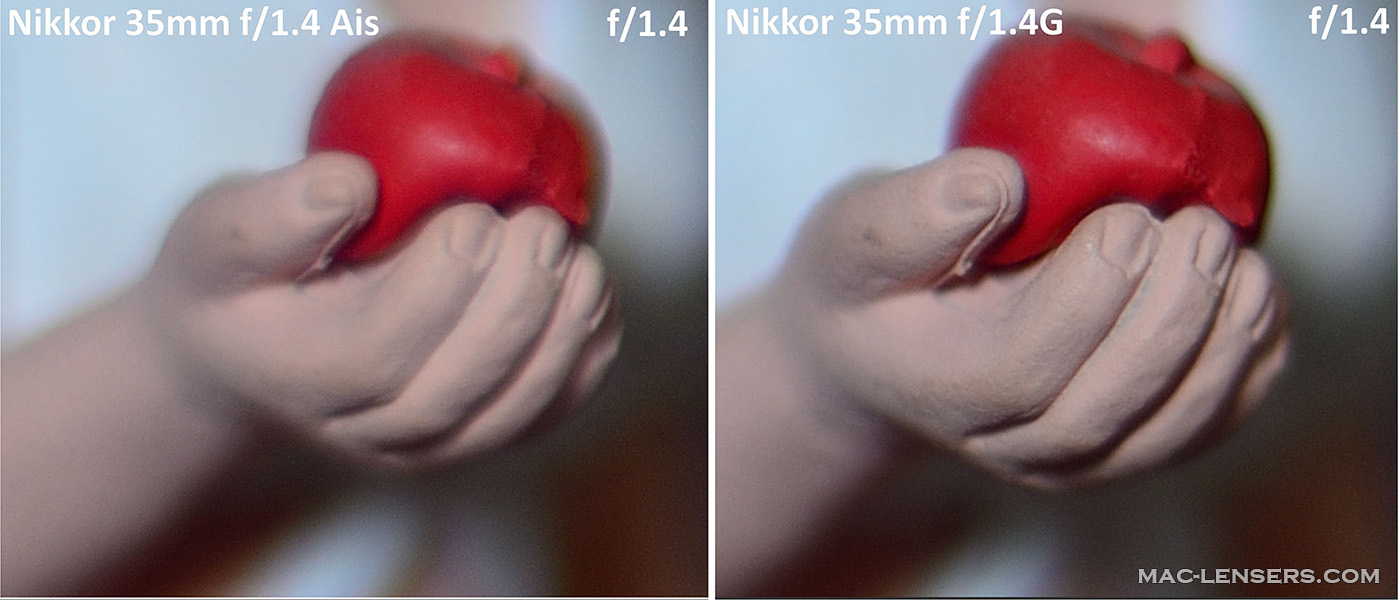
But let’s give another chance to the 1.4G, maybe it was just the positioning of the elements of the image that were not favourable to it. So, we moved a bit the dolls around and changed the background to have some nice bokeh bubbles behind.
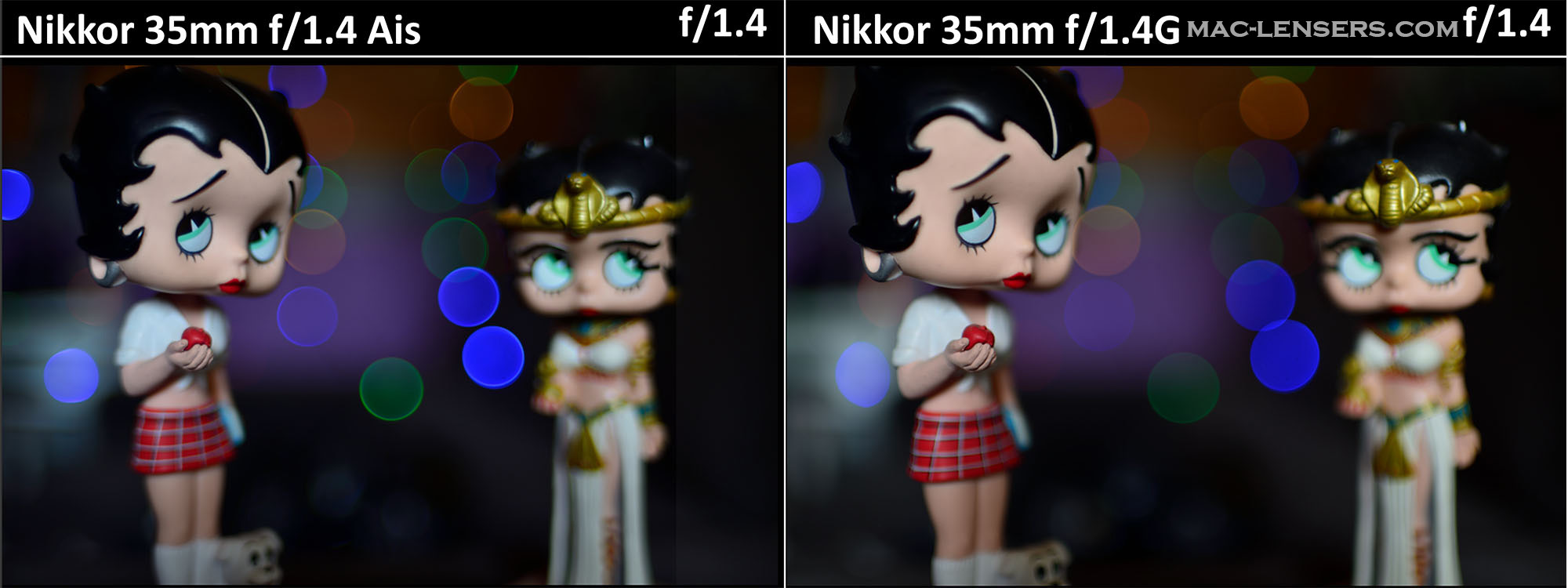
Now both lenses give very interesting images. The compression of the 1.4G gives some dramatic rendition to the scene with the back doll being compressed to the front plane and the subtle bokeh bubbles. The 1.4 Ais gives a kind of mystic look with a clear separation between back and front dolls and the strongly lined bokeh bubbles. Here both lenses perform beautifully, the choice would rather depend on the look and feeling sought for.
Closing at f/2 does not provide many changes to the front-ground besides making it slightly more contrasted for both lenses (see the crops below). On the background, one can sees the influence of the aperture blades on the bokeh bubbles. As a reminder, both lenses have 9 aperture blades, although those of the 1.4G are rounded to create smooth bokeh bubbles even if the lens is stopped down.
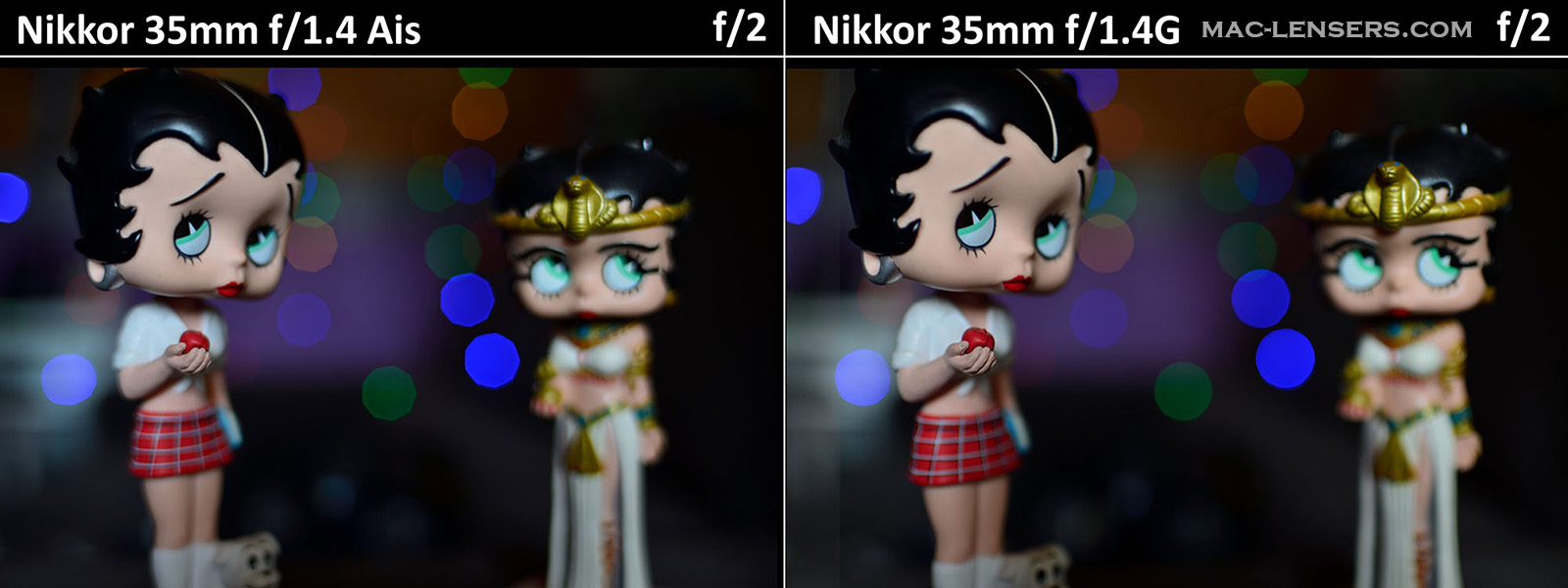
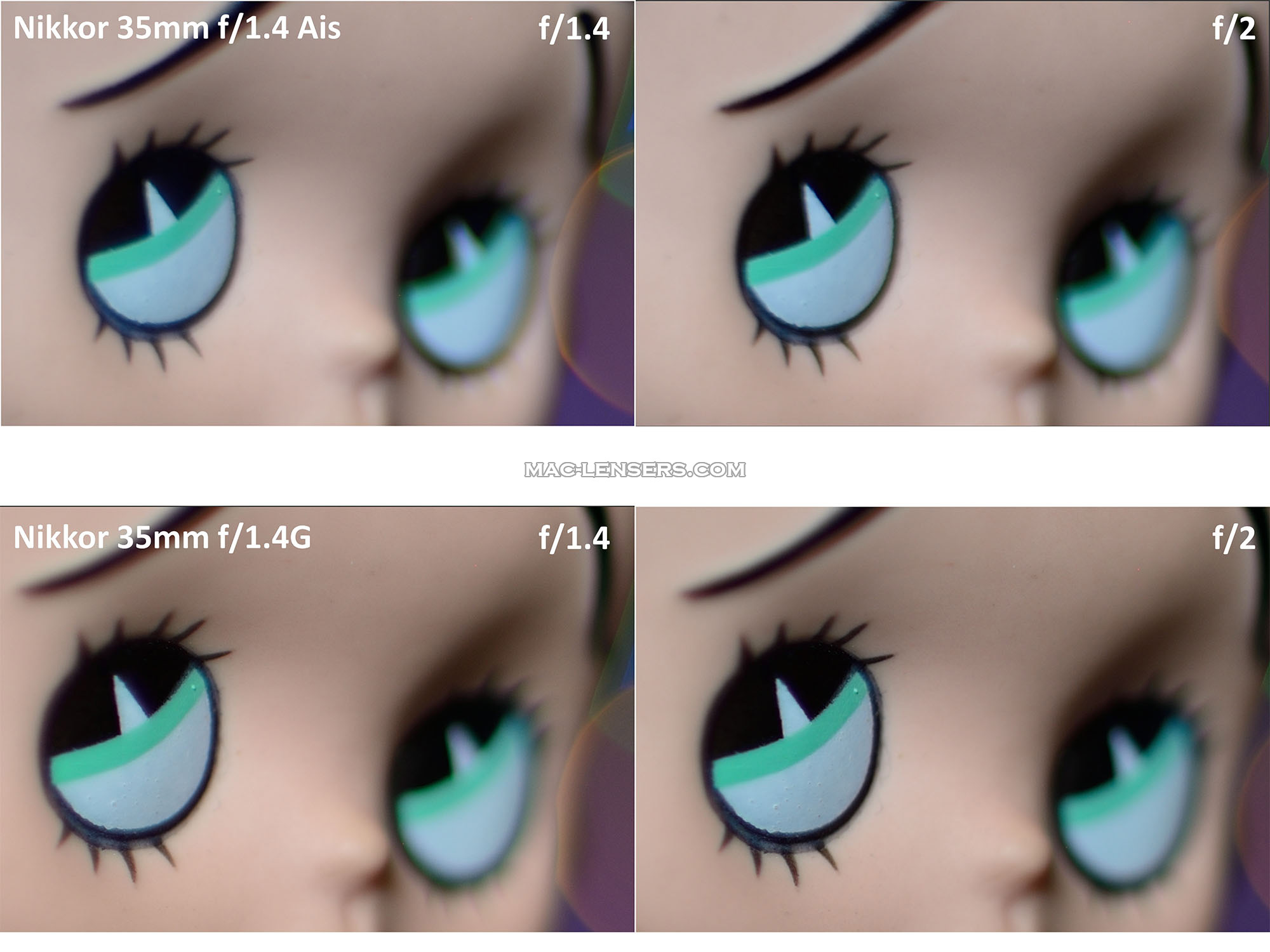
Then, stopping down for this particular scene does not have any particular interest besides making it sharper.
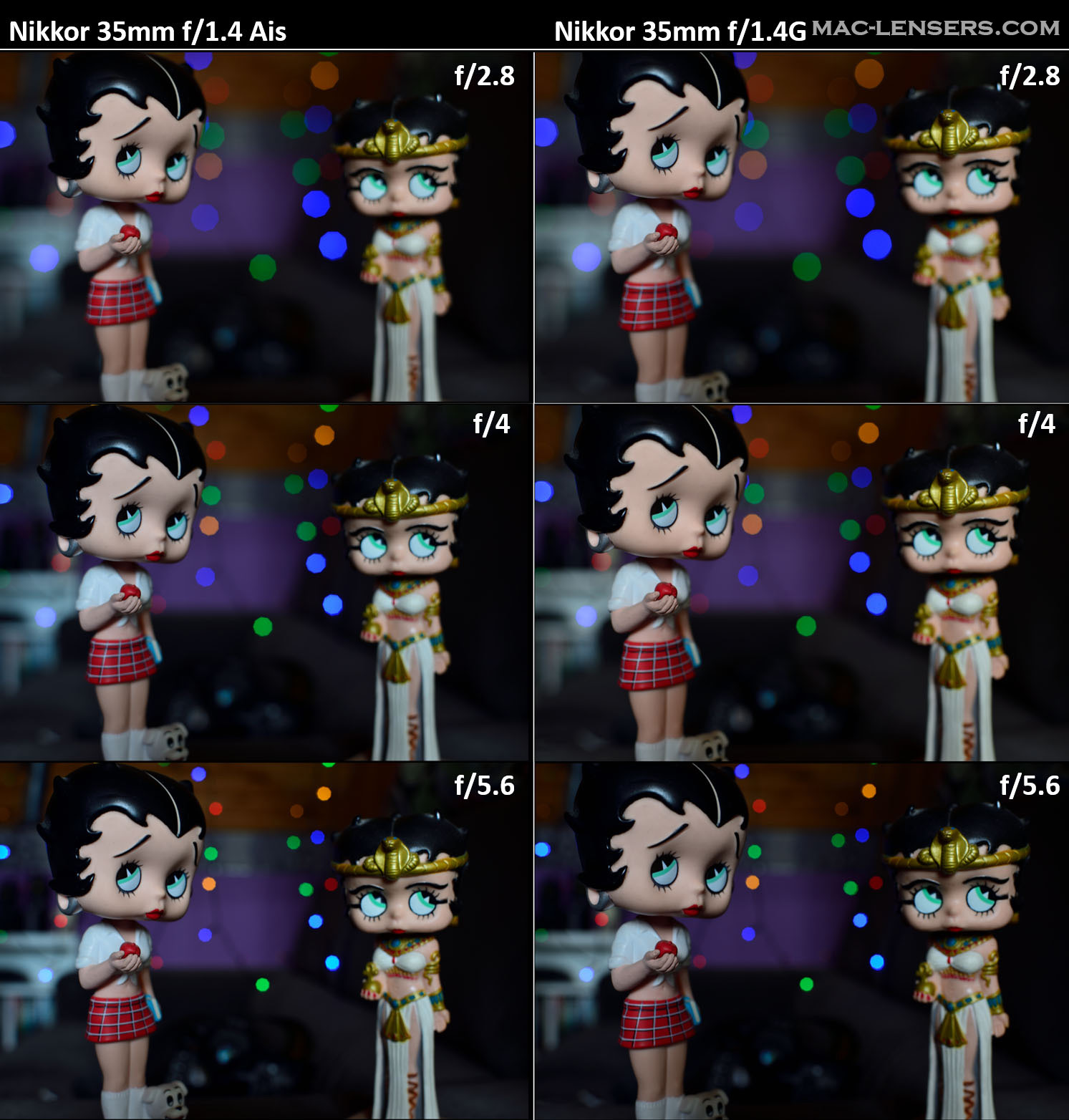
So what to conclude, both lenses do the job brilliantly, so what to get at the end will depend much on your photography needs. If you want the absolute performance wide open and fast moving subjects, go for the 1.4G. If you want (or can) take your time, and want that vintage look, then the 1.4 Ais is for you.
We don’t consider budget here as both lenses are rather expensive, which does not mean you can get lucky and get one or the other cheap.
